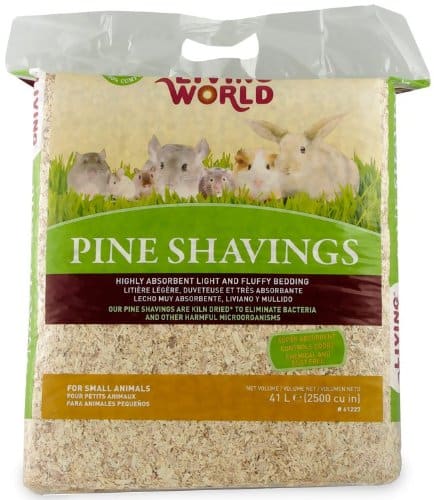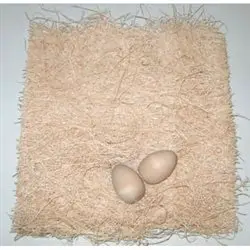The 10 Best Chicken Coop Bedding Options – Reviewed
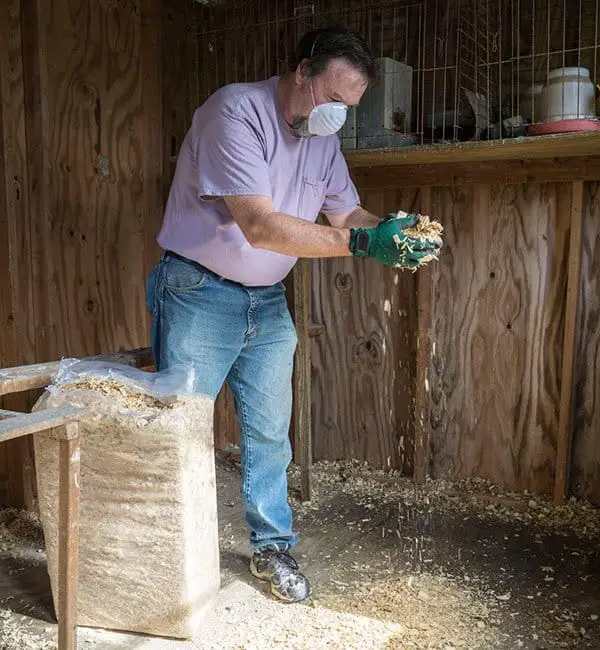
Table of Contents
Bedding and litter in the chicken coop, nesting boxes, run and other areas of the enclosure isn't for luxury. It's to help give the chickens a foundation for their legs and to provide for a safe landing for the eggs they're going to lay.
Deciding which type of litter to use can be a bit confusing. To make things a bit easier for you, we've gone over some of your options so that you'll have a better understanding of what each type of litter can provide.
As a chicken owner, you may be doing a bit of hemming and hawing over what animal bedding to use. You'll want to consider the price of the bedding as well as how well it works on odor and of course, how clean it's going to keep your chicken coop.
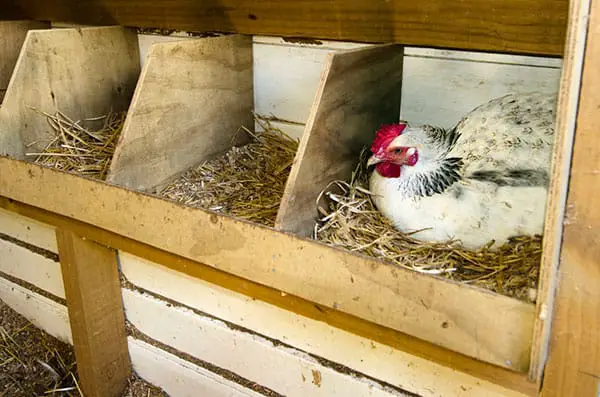
Many people seem to think that cheaper is better. With chicken bedding options there are good cheap options, but you typically get what you pay for.
As a chicken owner, chicken bedding doesn't stop at nesting. Some types of bedding may cause respiratory illness and possibly even death. This guide is designed to give you an excellent place to begin your search on which bedding is best suited for your chickens.
What Exactly Is Animal Bedding?
Animal bedding is the substrate that you'll be putting into your chicken coop to help absorb liquids and cushion their feet as they walk and the eggs as they're laid. It will help the chickens to safely walk in and around the cage.
Many chicken farmers have used hay and straw for animal bedding, however, there are many more cost effective options for bedding on the market today.
How Frequently Should I Change My Chicken Bedding?
Typically speaking, the animal bedding should be exchanged when the odor begins to build up around the chicken coop.
If you are plugging your nose and having a difficult time breathing while out in the chicken coop, it's time to change the bedding. It won't harm the chickens to change the bedding in fact, it may help to prevent other health issues.
While changing the bedding, it's also a good time to disinfect the coop with an all natural cleaner like apple cider vinegar to help prevent any bacterial buildup that could make your chickens ill.
What Does The Bedding Do?
A clean chicken coop ensures healthier chickens. If your chickens are walking in chicken poop and moldy bedding, The mold spores can lead to health issues and diseases and other upper respiratory illnesses.
Many chicken owners are extremely vigilant about keeping their coops clean and will “spot clean or poo pick” the bedding daily or each time they are in the coop. While this extreme isn't really necessary, it will certainly help to maintain the level of cleanliness that will help to ensure that the chickens remain healthy.
Cleaning the coop daily isn't quite necessary but it should definitely be cleaned every 2 weeks to maintain and ensure a level of cleanliness that will help to maintain a healthy coop.
What Are The Different Kinds Of Bedding And How Do They Differ?
There are a wide variety of different kinds of bedding and each type has its own pros and cons. Here is a list to help you understand the differences between the different kinds of bedding.
| Bedding Type | Price | Ease to use | How often have to change |
| Straw and Hay | $$$$ | ★★★ | Once per week |
| Pine Shavings | $$ | ★★ | Once per quarter |
| Excelsior Fiber | $$$$ | ★★★★★ | Only when overly soiled |
| Sand | $$$$ | ★★★★★ | Once or twice per year |
| Grass Clippings | $ | ★ | Every few days |
| Shredded Leaves | $ | ★★★ | Every few days |
| Recycled Paper/ Newspaper | $ | ★★ | Every few days |
| Shredded Cardboard | $$ | ★★★ | Every few days |
| Sawdust | $ | ★ | Frequently |
| Hemp | $$$$$ | ★★★★★ | Once or twice per year |
Straw And Hay

Many chicken owners like straw for its earthy smell and texture. It's an ideal option made from wheat, barley, oats or rye or any other such grasses that are available.
Many, such as oat and wheat are more absorbent which will make it easier to clean out the coop. Unfortunately, straw is notorious for not holding up very well in the rain and it may be moldy which can lead to other issues. All though it's affordable, it's not really very economical due to how it holds up in inclement weather.
Hay is very similar to straw in composition, however, it's much more expensive. It's also not the most durable and may break down in inclement weather as well. It develops mold spores easily and this in turn may make for some very sick chickens.
Straw and hay are very well suited to animals who enjoy nibbling on hay however it's not the best choice for your chickens for their bedding.
Pine Shavings
Another popular option is to use pine shavings. These are readily available at feed supply stores as well as pet supply stores, large box stores and specialty stores.
They are very expensive, don't break down readily and dry quickly.
The scent of pine is amazing however, it will break down over the course of time.
Excelsior Fiber
Also known as 'wood wool' a newer option is to use excelsior fiber pads as a bedding option for your chickens in their nesting boxes.
Some chicken husbands love them because they leave the eggs on top and absorb any fluids, feces etc down and away from the laying area.
Chickens like sitting on these pads and they are as easy as kitchen sponges to replace, just pull it out and put in another one. Although they have the possibility to become a little expensive.
Excelsior fibre pads are becoming a popular bedding material for chicken husbands.
Wood Shavings
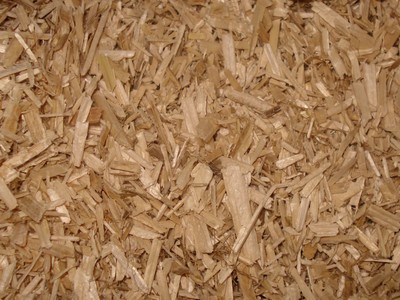
There are a few different kinds of wood shavings. They should have already have had the dust removed so that your chickens won't have to deal with any respiratory issues.
Usually these will be absorbent and hygienic however, they may have other issues such as pesticides or larger sized chunks as well as sawdust so be sure that you're getting all natural and that it's had the dust extracted. Cedar and other woods may make up the shavings.
Always read labels and ask questions of the sales staff prior to purchase. Keep in mind that when using cedar, Cedar shavings have been known to cause respiratory problems in chickens so use at your own risk.
Sand

Excellent and very clean, it's expensive to start out with however, it will only need to be replaced about two times per year. It dries out quickly and as long as it's being raked out frequently it shouldn't pose any issues.
Many chicken farmers use a cat litter scoop to keep their coop clean when they use sand. It won't break down and dries out quickly which makes it an ideal option. Keep in mind that the finer the sand the more likely it is to clump when moistened.
Grass Clippings
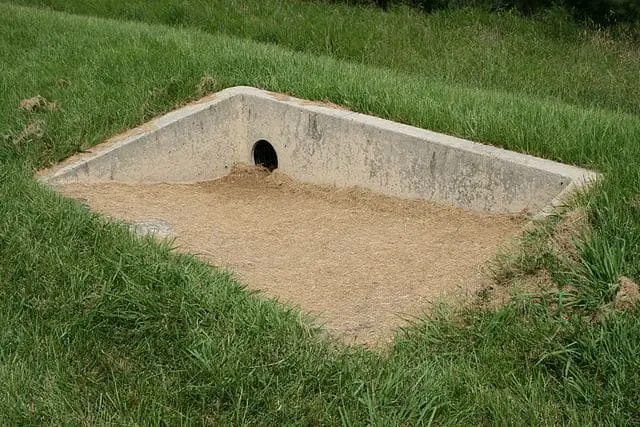
If you have a large enough yard, you may opt to use your grass clippings. They work well, however there are a few reasons you may opt to not use them. They do tend to stay wet when it rains or they're moistened.
They also break down very quickly, since they are grass they will dry up and begin to smell quickly as well. If you're using grass clippings ensure that there are no pesticides used in the grass that has been mowed as well as any herbicides, chemicals or fungicides.
Chickens will peck at anything and ingest it so be sure there aren't any bits or pieces of anything that could injure your chickens.
Shredded Leaves
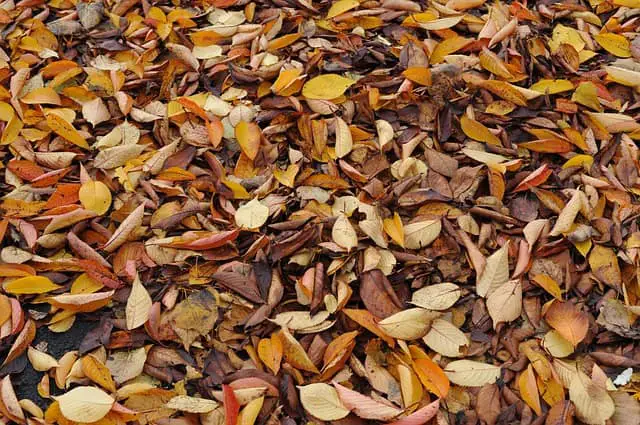
Dry Leaves - can be a good chicken bedding
If you have a lot of trees you could save the leaves in the fall. However, leaves must be finely shredded and require proper preparation.
Whole leaves will take a very long time to break down so they aren't really a good option. Shredded leaves will break down quickly so you'll have to replace them often and they tend to harbor the moisture.
Wet leaves tend to stick together and mat up as well which can make for a slippery walking surface. Leaves tend to work well when mixed in with other types of bedding.
Recycled Paper
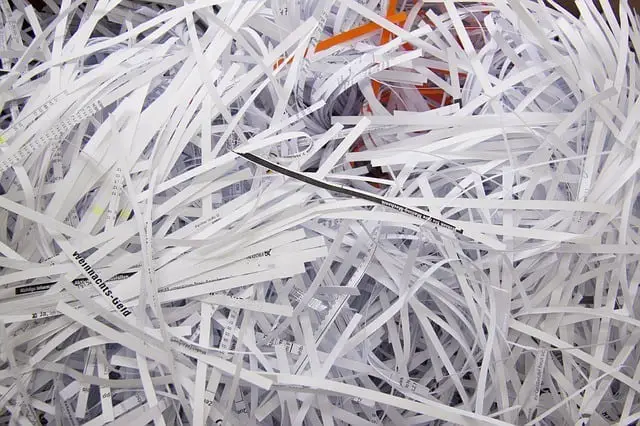
Best chicken coop bedding - Shredded Paper
Shredded newspaper and other recycled papers are an ideal way to give your chickens a nearly free bedding.
However, be cautious as the papers may contain poisonous inks, staples (if they are from shredded paper in offices) and papers that have chemicals or been chemically processed.
Be mindful of the type of paper being shredded and its former life before choosing this option.
Newspaper

Another popular option for those who recycle, it may be an effective form of bedding however there are still inks to consider as well as the fact that mold may easily develop as it won't fully dry out.
While it may work short term, be aware that you'll have to replace it a few times per week and have a steady supply in order to have it available as often as you're going to need it.
Hemp
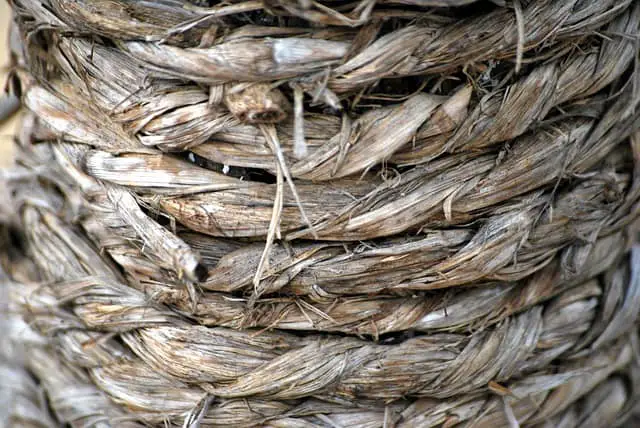
Perhaps one of the best options on the market today, hemp is made of the stalk of the cannabis plant. It's an ideal substrate option as it's odorless, fully absorbent and it is an all around organic product.
It can help to keep the coop clean for a longer period of time. It also tends to keep out the creepy crawlies that like to check out your chicken coop. As a natural pesticide it works well and although it tends to be higher priced, many chicken farmers say it's well worth the price.
Sawdust
Perhaps the most discouraged by seasoned chicken farmers, sawdust is dangerous due to the powdery nature and the dust that it harbors. If you're hoping to avoid upper respiratory issues, this is not the route to go. It's not very absorbent and it tends to harbor maggots. Go for something else if you're concerned about the health.
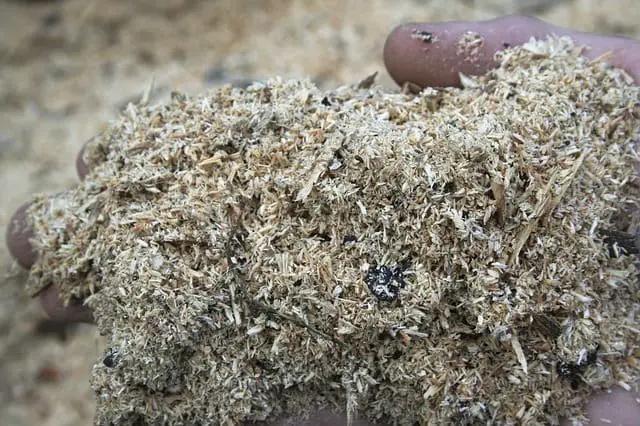
Obviously the decision is all up to the chicken farmers however it's important to choose one that will keep your chickens healthy without harboring any harmful bacteria, bugs or anything else that can cause problems.
Many choose to change the bedding frequently and that can never hurt. By keeping the bedding fresh and healthy the chickens are going to be healthier and provide more to the chicken farmer. Remember too that keeping the nesting boxes and the under trays fresh and clean is vital for their health as well.
What are the popular choices for Chicken Coop Bedding in the different areas of my coop?
Nesting Boxes
Many chicken farmers prefer wood shavings for their nesting boxes. Some prefer hay or straw and change it frequently. Whichever you select, remember to keep it dry and ensure that the chickens aren't suffering from any respiratory issues.
For more scent or to keep it fresh mix in some mint, lavender or rosemary. This will also keep pests at bay. You'll also want to ensure that the scents aren't bothering the chickens respiratory health either.
Coop
Many farmers prefer pine or cedar for the scent however, keep in mind the respiratory issues regarding the chickens. Obviously, you'll want something that is easy to keep clean and change out as needed and you'll want it to be affordable. Many farmers use the deep litter method in order to avoid wasting the bedding and save on money. Again, keep the health of the flock in mind at all times.
Run
Outdoor runs are ideal and most chicken farmers prefer sand for outdoor runs. Sand is ideal and works well however, it won't break down so keep this in mind. You'll have to use a cat litter scoop in order to scoop out the debris and manure frequently. Chickens love dust bathing and sand is ideal for this use.
As long as you're willing to clean it frequently, sand will be a fine option for your outdoor run. Remember to avoid very fine sand as it can be aspirated by the chickens. A medium sand grain will be fine to ensure that they're not having respiratory issues.
Summary
As you can see, you get what you pay for with chicken coop bedding. And all the options will suit different chicken coops. We hope that you choice to find the best chicken coop bedding for you has been made a little easier.
If you're researching on growing chickens and looking for a coop, I comprized a list of the best chicken coops.
Thanks for reading.
If you have any comments, queries or questions please use the contact page.
Related Articles:

